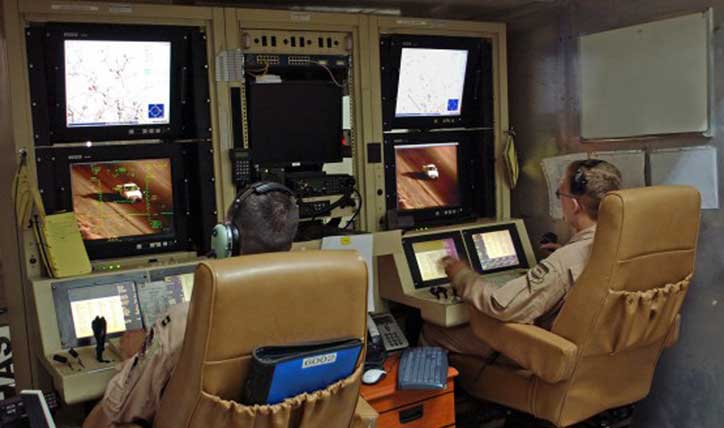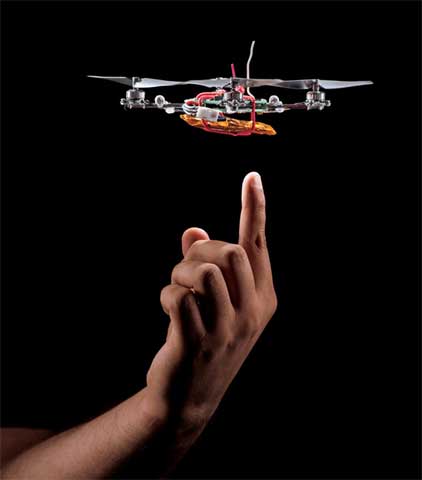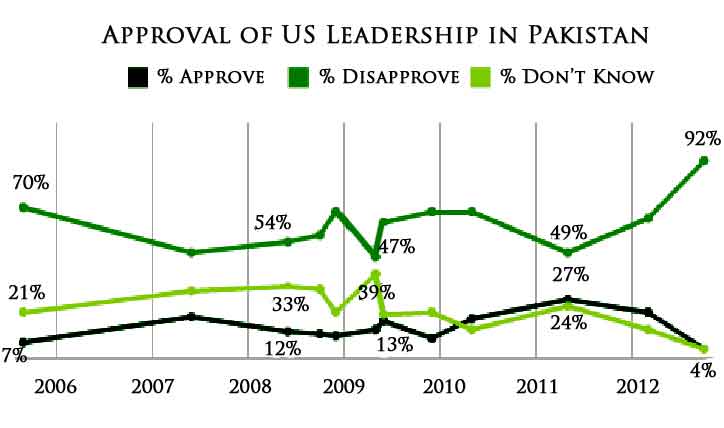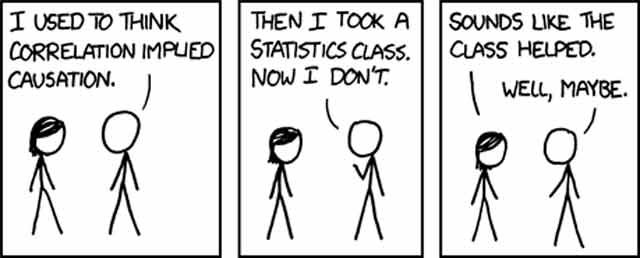A foreign policy aimed at the achievement of total security is the one thing entirely capable of bringing this country to a point where it has no security at all …
we would be doing things to ourselves as vicious and tyrannical as any that might be brought to us from outside.
Scratching Below the Surface
Feb. 26, 2013
What Are Drones?
The word “drone” comes from a word that means “to make noise”. (And now drones try to be silent.) An unmanned combat air vehicle, also known as a combat drone (or often simply drone), is armed. No human is aboard (making it fuel efficient and trim), yet (for now) it remains under real-time human control. If the drone’s human controller is actually located some distance away from where the drone is operating, this may cause latency (resulting in a reduced reaction time); furthermore, the controller’s field of vision and clarity of vision could stand to be improved. However, overall, if tuned and used correctly, drones can save money and lives in combat situations. And their size is constantly being reduced, which should increase their precision and versatility. (Drone weaponry is shrinking to a soon-reached “5-pound missile the size of a loaf of French bread”, down from the 100-pound Hellfire missile in use today.) Conceivably, in the near future, one could deliver a fatal package the size of a beetle to a politician, a military turncoat, or a suspected spy, all the while completely evading detection. Drones are becoming more pervasive and effective all the time. And they aren’t going away just because some government decides to disapprove of them.
There are also unarmed drones which, militarily, have many functions, most often involving surveillance. There are a wide variety of drone shapes, sizes, configurations, and characteristics. Historically, unarmed unmanned aerial vehicles were simple remotely piloted aircraft, but autonomous control is increasingly being employed. They are often preferred for missions that are too “dull, dirty, or dangerous” for manned aircraft. Used commercially, they raise privacy concerns (a danger unlikely to ever be completely eliminated). Small unarmed drones can courier, search inside burning buildings, look for breaks in fences and barriers, seek stranded hikers, monitor traffic, and myriad other tasks useful to society. Preventing collisions between drones and objects and dealing with other such out-of-control situations are things right now being worked out.
This discussion mainly centers around armed drones.
Who Has Drones?
Lots of countries have known operational armed drones: China has at least 3 types, including one that looks like a Reaper while behaving like a Predator; France has only one kind, based on the Israeli model; Germany’s single type is similar to France’s but modified; India has 3 variants of the Israeli model and two drone models of their own design. Iran is known to have several types of drones; Ireland has a single type used in Irish Army duties; Israel has at least 5 variations of its proprietary model. North Korea has “flying bombs”; Pakistan is testing two models (one purchased from Italy) and a third model “under development”. Russia has the Israeli model; Taiwan is having academics develop one based on a US model; Turkey has a few unique types; and (finally), Italy, the UK, and the US all have Predators and Reapers.
Who Makes Drone Rules?
International laws of war govern conduct and define combatants. In general, parties are to limit civilian deaths/injuries where possible by properly identifying targets. A person should be assigned (and accept) accountability for the final decision to deploy. The controller, who needs special training, may sometimes be a civilian, but he/she is nevertheless considered a combatant under the rules of war and MUST (be made to) understand the legal and moral ramifications of that status.
Who Trains Drone Controllers?
Apparently, to pilot a drone for posting to a US war zone, a pilot’s license is NOT required, merely about 5½ months of training, an above-average score on an aptitude test, a security clearance, medium strength, normal colour vision, US citizenship, and a clean record other than minor traffic violations. (And no qualms about killing for the armed-drone flyers. No special qualifications for that were mentioned.) Three universities in the US (Kansas, North Dakota, Florida) offer bachelor’s degrees for would-be pilots for (generic) remotely-piloted aircraft. This includes 13 credits in engineering, so students can get an overview of the vehicles’ complete systems. Though university courses are presumably for the unarmed civilian drones, some graduates are hired by the US CIA for posting overseas. I could find no information for drone piloting training for other countries.
What Needs to Happen?
Drones appear to have wide public support in the US, but the sentiment generally favours them being controlled by the military, not the CIA, and NOT being used on American citizens abroad. Further, a large majority of Americans feel that armed drones should NEVER be used on US citizens at home. (Of course, you could also say, “Shooting people with handguns has wide public support, especially if it’s the military, not the CIA, and if they aren’t targeting American citizens either at home or abroad.” What distinguishes armed drones from all the other ways governments use lethal force?) Drones need to be better at taking out an enemy’s own robotic drones. To do that, they must be able to recognise, track, and disable them. (It may soon to be “drone versus drone” time). Let’s face it: the drone genie is out of the bottle. Technology makes drones feasible, and since they’re advantageous for a wide range of purposes, it’s unquestionable that they’ll continue to be a factor on the world stage. The question is not IF drones should be used, but HOW BEST can they be used?
The Case for Using Drones
In war zones, if drones aren’t used, combatants may need rooting out through full-fledged ground campaigns, likely killing and displacing more civilians than drone-use. (Areas where militants hide may not be easy terrain.) Bringing development and education into those difficult-to-access areas could maybe cure extremism, but there may still be a need to weed out (meaning kill off) the already-entrenched militants for a realistic chance that any development process could succeed. The legality under international law of various types of drone use (mainly involving target choice) needs to be firmly established. (Can drones be unleashed in any country by any other country if certain parameters are exceeded and certain interim measures fail? Can we rationally distinguish between companies, countries, and cults?)
Drones are cheap and versatile: they conserve resources (to the extent they’re reliably used) — but any conflicts in which they’re involved should be viewed by most impartial observers as unavoidable and justified. The US has used drones to kill suspected terrorists in both Pakistan and Yemen. Did Pakistan ask the US for help? (Apparently.) Did Yemen? (Perhaps unofficially. There are conflicting and conflicted reports about this.) Are drone strikes ever used as bartered favours? (How would anyone know?) Indications that this has sometimes happened may appear over time, but to do so, records containing drone use rationale must eventually be revealed (more about this later). The use of military force against targets in a country who has neither asked for help nor is at war with the invader is troubling. (Would the US not have used deadly force in Yemen except via unmanned armed drones? I don’t know. Drones are easier/cheaper/better for some purposes, but it’s a marginal improvement, not a paradigm shift.)
Drones can easily traverse impassable terrain; they refuel less often than manned jets. Training drone controllers is faster and significantly cheaper than training pilots. Future drones may be able to avoid radar detection and gain hyper-maneuverability. They’re feared by terrorists because they’re virtually invisible and very quiet. US Attorney General Eric Holder claims certain conditions must be met for a target to be drone-killed: he/she must be “a senior operational leader of al-Qaida or associates”, planning an attack against the US (though clear evidence that a specific attack on US persons or interests is planned for the immediate future is NOT required), located in a country that has given the US permission to strike, and be infeasible to be captured (in other words, considered “imminent threat”). The strike must be conducted according to “law of war principles.” Some members of the Pakistani military actively (but privately) support US drone-use. However, Pakistan has recently reversed their stance and say they no longer allow US drone strikes.
There are cases when countries should go to war but didn’t, such as the humanitarian situation in Rwanda. Drones could have enabled and encouraged such an operation by reducing the financial and political cost to the US or other humanitarian interventionists. Thus, drones appear able to improve a country’s ability to behave justly. Every action taken regarding drones is recorded. For a difficult decision operators can bring other people into the room for further opinions before pulling any trigger. This means there is more room for checks and oversights with drone use. If using a drone averts risk to a pilot without compromising an operation, countries may have a duty to use drones. Helicopter pilots who looks down and think someone has a surface-to-air missile may shoot first and figure it out later because their lives are in danger; with drones, they can afford to make sure the targets are combatants before engaging. From the perspective of troops, any technology that allows fulfillment of the mission without risking their own lives is an ethical non-issue. The subjects that matter in every situation are: When is “collateral damage” acceptable? How much is acceptable? Are the targets military or are they extra-legal? These are all questions about policy and law, not technology.
The first use of a drone in a combat mission was by Iran during the Iran-Iraq war. Drones evolved from the development of guided munitions over a course of several decades.
Is an Invaded Country’s Sovereignty Violated by an Invading Country’s Drones?
If anything, the actual violation of sovereignty is being carried out by militants rather than drones — drones helped Pakistan establish sovereignty rather than violating it. Drone attacks are aimed at killing militants in a targeted manner compared to suicide blasts conducted by those militants to kill innocents indiscriminately. More than 35,000 people in Pakistan have died due to religious terrorism. Drones have been much maligned but remain one of the least bad alternatives. The US public’s vexation over the morality and legality of a drone war has produced confused debate. By what right does the US president order killing by drone of enemies abroad? The answer given under the laws of war is imminent threat (self-defense) and affiliation with al-Qaida. Apparently Osama bin Laden declared war on the US in 1996; since he apparently was speaking for al-Qaida, its members were thereafter considered legitimate targets. Anwar al-Aulaqi was apparently a self-declared al-Qaida member and thus an enemy combatant. Once he “took up arms” against the US, he forfeited his privileges of citizenship. (Notwithstanding the foregoing, Article III Section 3 of the US Constitution specifically states: “Treason against the United States, shall consist only in levying war against them, or in adhering to their enemies, giving them aid and comfort. No person shall be convicted of treason unless on the testimony of two witnesses to the same overt act, or on confession in open court. The Congress shall have power to declare the punishment of treason.” However, al Aulaqi was not accused of treason — if he had been, he couldn’t have been killed as an enemy combatant on a “technical” battlefield.) Al Aulaqi’s death was not the first of an American citizen by a drone, by the way; in 2002, US citizen Kemal Darwish was one of 6 men killed by a drone strike outside a war zone, in Yemen. I see the difference between a US citizen being accused of treason, labelled a traitor, tried, and executed and in him instead being called an enemy combatant, and executed on the “battlefield” as hugely important, though not one related to drones per se except that being killed by a US armed drone today means being killed by the CIA, not the military.
Who Has Authority to Oversee Life-and-Death Drone Targeting?
In war, the ultimate authority is always the commander-in-chief and those in the lawful chain of command to whom he has delegated such authority. For those who believe the war on terror is not war but law enforcement, this does not constitute a compelling reason. That al Aulaqi (or bin Laden, or indeed, any single al Qaida fighter or agent) should be handled in a law enforcement context can be rational. But an armed assault by a hundred trained fighters using military-grade weapons (mortars, machine guns, grenades) on an army base in Afghanistan is dealt with in a military context. Where is the line drawn? This, too, is an important question.
What Is the Future for Unarmed Drones?
While most jobs flying drones currently are military-related, universities and colleges expect that to change by 2015, when the US Federal Aviation Administration (FAA) is due to release regulations for unmanned aircraft in domestic airspace. Once those regulations are in place, the FAA predicts that 10,000 commercial drones will be operating in the US within 5 years. Many community colleges offer training for remote pilots. Some aviation industry analysts predict drones will eventually come to dominate the US skies in terms of jobs. 358 public institutions, including 14 universities and colleges, have permits from the FAA to fly unmanned aircraft, many of which were issued so that programmes to train future drone pilots could be undertaken. Possible applications for unarmed drones: monitoring livestock and oil pipelines, spotting animal poachers (Google recently donated US$5 million to advance this programme in Africa and Asia), tracking down criminals fleeing crime scenes, and looking for people inside burning buildings to name but a few. As of now rules for pilot qualification are set by the employer, but that may change.
What Is the Case Against Drone Use?
The arguments put forth against drone warfare fall into two main categories: Are drones ethically a worse technology that manned aircraft? Is the use of drones extra-judicially illegal (or should it be)?
Regarding Drone Technology
Is better technology really the answer? Inevitable proliferation will place drone technology in the hands of all states (the “universality formula”), some of which won’t follow the rules. Even with technology, the US failed to achieve core objectives in either Iraq or Afghanistan. Iraq isn’t a stable, pro-American democracy (if anything, it tilts toward Iran). Nor was the Taliban defeated and a stable democracy created in Afghanistan. Technological wizardry doesn’t always translate into strategic success. (Would just avoiding war work better? Probably. But where is the magical plan to bring that about?)
Will countries transition to methods of aggression that rely heavily on remotely-operated armed drones? (Their use is up up 700% under Obama to where now they constitute up to 10% of overall munitions deployed — and not by the military but by civilians working for the CIA.) People who order assaults may be increasingly alienated from the process of moral deliberation surrounding the premeditated killing of others. (But is that somehow less of an issue with cruise missiles or high-altitude bombing?) Many who are against drones claim they create more militants than they kill. The perception of drone strikes amongst Pakistanis is perpetuated over the Pakistani media, claiming they kill civilians indiscriminately. (Would Pakistanis view the US more favourably if they used artillery or bombers instead of drones? Very unlikely.) In 2011, a Pew Research Center poll found only 12% of Pakistanis view the US favourably. A more recent poll saw that figure drop to 4%. Additionally, the fact that drone attacks are secretive (even after the fact) exacerbates public anger and suspicion. If they were seen as just, acceptance would be higher.
US warfare evolved from professional warriors (in the post-Vietnam era when soldiers were no longer drafted but paid volunteers) to the mercenary and outsourced war after 9/11 (when for-profit industrial complexes carry out military and intelligence responsibilities in Iraq, Afghanistan and elsewhere). Now, the CIA has transitioned from being purely an intelligence agency to being more of a covert military force with their own unmanned air force. Today US authorities use the term “bugsplat” to refer to humans killed by drone missiles, a term also used in children’s computer games. Risk-free remote killing degrades traditional conceptions of valour.
Regarding Drone Ethics and Procedures
Many disputes seem to come down to whether one starts from the premise that the US is legitimately at war (or not). The Authorization for the Use of Military Force (AUMF) was passed by Congress, signed by the President, and upheld by the Supreme Court — but it doesn’t quite work the way other declarations of war have in the past. The arguments used to justify the powers the US president claims could be used to later assume even more expansive ones — perhaps even to claim the right to kill anyone on the planet, at any time, with no legal process or concern for the lives of bystanders killed in the operation. (Perhaps his power will one day extend to the rest of the solar system — and, when possible, will move back and forward in time in order to kill some folks already dead or else not born yet.) While there are some limits on the authority as set out, they are elastic, vaguely defined, and manipulable. While accepting that “there will clearly be circumstances in which the president has the authority to use lethal force” against Americans who take up arms against the country, a group of US senators has written that, “It is vitally important … for Congress and the American public to have a full understanding of how the executive branch interprets the limits and boundaries of this authority.” Others have an issue with the idea of “American exceptionalism.” This philosophy is pervasive and subtle. It starts in school, is echoed in church, and encouraged by political leaders and the entertainment industry. It’s difficult, some say, to reason with people that in some way believe they’re special people with a special destiny to lead the world.
Drones significantly increase the executive branch’s ability to wage a clandestine war. CIA powers to carry out drone attacks in Pakistan and Yemen, particularly in ungoverned tribal areas, are unchecked by US legislative and judicial branches. While drones often circle a target for hours before striking (resulting in fewer civilian casualties than from manned attacks), the attack is generally more likely to have actually taken place, because it is now easier and less risky. Detachment from a defined war-zone is a significant ethical issue as this may lead to combat-spread. The drone wars in Pakistan and Yemen are increasingly targeting low-level militants who don’t actually pose a direct threat to the United States and contribute to a “perception of American arrogance.” Perhaps a modern version of a WANTED: DEAD OR ALIVE notice could be publicly circulated, listing particulars, allowing named individuals the chance to turn themselves in (or hire attorneys) rather than wait for drones to find them.
Drones may make military activity more likely as they’re cheaper and less likely to involve domestic troop injuries or deaths. (This will apply to all countries with drones.) Their stealth makes drones less accountable and allows for activity far from any battlefield and in countries with which the invaders are not at war. Drones could be corporately (or even privately) owned. Long-term, they may decrease human well-being, particularly if constant surveillance becomes the norm. In a time when the US spends $1 trillion a year on security, is that even sustainable? Is it in America’s long-term interest to be waging war against a self-renewing insurgency inside a country about which Washington has at best a hazy understanding?
Part of the reason an executive exists is to make those decisions that need to be done quickly. Secrecy here does not mean a lack of transparency — it refers to deliberations compatible with brisk, decisive choices. (This was more true in 18th century when travel was burdensome.) Having a single executive allows for accountability, especially after the fact: no passing the blame as there might be with an executive council. But someone needs to be able to render judgement on those activities after the fact. There needs to be a system of post-facto accountability. More transparency by the executive branch would not interfere with decision-making. The lawyer or “informed person” who signed off on the killing would submit a dossier to, perhaps, a special panel, who would then review the decision chain and determine if the government had substantively met its own criteria. The panel would release to Congress and the public redacted versions of decisions. If it found that the president was using powers indiscriminately, something could (eventually) be done about it.
An official with the US Federal Aviation Administration has stated that no armed drones will be permitted in US airspace, but acknowledges that drones could, for example, be equipped with weapons when monitoring the US-Mexico border because that’s outside FAA jurisdiction. One day, will the federal government assassinate Americans on US soil? It’s almost impossible to imagine what drone technology will look like in 5 or 10 years. As the technology for arming drones spreads around the world, it will be impossible to control the use of unmanned, missile-firing aircraft. It will be possible without a great deal of intelligence to do something with a drone that is impossible to accomplish with a high-powered rifle or a truck full of explosives.
In summary:
- The conflict in Yemen, Pakistan, and elsewhere (regardless of the weapon systems used) is legally and morally questionable.
- The targeting of US citizens abroad — by any weapon system — is legally and morally questionable.
- The use of autonomous drones — when it arises — will be legally and morally questionable.
- Drones are an amazing tool, and so useful that they’ll be developed by pretty much everyone, no matter what.
- Drones (armed and unarmed) are exceptional tools for military conflicts, and can reduce costs, casualties, and — at least per strike — collateral damage.
- In fact, drones are so amazing that they may make war almost too attractive. If so, this is morally questionable (although it won’t stop their adoption).
Notables
- George Frost Kennan (16 February 1904—17 March 2005) was a man of integrity and intelligence. Political realism formed the basis of his work as a diplomat. In the realist tradition, security is based on the principle of a balance of power, whereas the Wilsonian view (from former US president Woodrow Wilson, considered impractical by realists) relies on morality as the sole determining factor in statecraft. According to the Wilsonian approach, the spread of democracy abroad as a foreign policy is key and morals are universally valid. During the presidency of Bill Clinton, American diplomacy reflected the Wilsonian school to such a degree that those in favour of the realist approach likened President Clinton’s policies to social work. According to Kennan, such moralism without regard to the realities of power and of the national interest is self-defeating and will lead to the erosion of American power. In his historical writings and memoirs, Kennan laments in great detail the failings of democratic foreign policymakers and those of the United States in particular. According to him, when American policymakers suddenly confronted the Cold War, they had inherited little more than rationale and rhetoric “utopian in expectations, legalistic in concept, moralistic in [the] demand it seemed to place on others, and self-righteous in the degree of high-mindedness and rectitude…to ourselves.” The source of the problem is the force of public opinion, a force that is inevitably unstable, unserious, subjective, emotional, and simplistic. Kennan insisted that the US public can only be united behind a foreign policy goal on the “primitive level of slogans and jingoistic ideological inspiration”. In 1989 President George H W Bush awarded Kennan the Medal of Freedom, the nation’s highest civilian honour. Yet he remained a realist critic of recent US presidents, urging the US government to “withdraw from its public advocacy of democracy and human rights”, saying that the “tendency to see ourselves as the centre of political enlightenment and as teachers to a great part of the rest of the world strikes me as unthought-through, vainglorious and undesirable”. At the age of 98, he warned of the unforeseen consequences of waging war against Iraq. He warned that launching an attack on Iraq would amount to waging a second war that “bears no relation to the first war against terrorism” and declared efforts by the Bush administration to link al Qaida with Saddam Hussein “pathetically unsupported and unreliable”. Kennan went on to warn:
Anyone who has ever studied the history of American diplomacy, especially military diplomacy, knows that you might start in a war with certain things on your mind as a purpose of what you’re doing, but in the end, you find yourself fighting for entirely different things that you had never thought of before. In other words, war has a momentum of its own and it carries you away from all thoughtful intentions when you get into it. Today, if we go into Iraq, like the president would like us to do, you know where you begin. You never know where you are going to end.
[IF you ever really end…]
- On the issue of the severe oppression of women and girls in Afghanistan, defenders of the US occupation of that desperate land would have you believe that the United States is the last great hope of those poor females. However, you will not be reminded that in the 1980s the US played an indispensable role in the overthrow of a secular and relatively progressive Afghan government, one which endeavoured to grant women much more freedom than they’ll ever have under the current Karzai-US government, more probably than ever again. Here are some excerpts from a 1986 US Army manual on Afghanistan discussing the policies of this government concerning women:
Provisions of complete freedom of choice of marriage partner, and fixation of the minimum age at marriage at 16 for women and 18 for men
Forced marriages abolished
Women brought out of seclusion, and social programmes initiated
Extensive literacy programmes established, especially for women
Girls and boys put into the same classrooms
Gender roles changing (especially for women) and women allowed a more active role in politics
The US-led overthrow of this government paved the way for the coming to power of Islamic fundamentalist forces, which led directly to the awful Taliban. And why did the US in its infinite wisdom choose to do such a thing? Because the Afghan government was allied with the Soviet Union and Washington wanted to draw the Russians into a hopeless military quagmire — “We now have the opportunity of giving to the Soviet Union its Vietnam War,” said Zbigniew Brzezinski, President Carter’s National Security Adviser.
- Giordano Bruno, (1548—1600), was an Italian Dominican friar, philosopher, mathematician and astronomer. His cosmological theories went beyond the Copernican model in proposing that the sun was essentially a star, and moreover, that the universe contained an infinite number of inhabited worlds populated by other intelligent beings. Most dramatically, he completely abandoned the idea of a hierarchical universe. The earth was just one more heavenly body, as was the sun. God had no particular relation to one part of the infinite universe more than any other part. Essentially, the same physical laws operate everywhere. Space and time were both conceived as infinite. Bruno’s cosmology is marked by infinitude, homogeneity, and isotropy, with planetary systems distributed throughout. Matter follows an active animistic principle: it is intelligent and discontinuous in structure, made up of discrete atoms. After the Roman Inquisition found Bruno guilty of heresy, he was burned at the stake. After his death, he gained considerable fame, particularly among 19th- and early 20th-century commentators who, focusing on his astronomical beliefs, regarded him as a martyr for free thought and modern scientific ideas. Bruno’s overall contribution to the birth of modern science is still controversial. Some scholars stress the importance of Bruno’s ideas about the universe being infinite and lacking geocentric structure as a crucial crosspoint between the old and the new. Others see in Bruno’s idea of multiple worlds instantiating the infinite possibilities of a pristine, indivisible One a forerunner of Everett’s many-worlds interpretation of quantum mechanics.
- The 7th continent, birthplace of the concept of wind-chill, has a colonial population not much bigger than its graveyard of Edwardian explorer-corpses, preserved like frozen peas along various expeditions’ competing paths to the earth’s southernmost point. Nevermind a native literary tradition: Antarctica lacks a native language. Since Robert Falcon Scott first trudged forth into the island’s interior in 1901, would-be Antarctic scribes have run up against their subject’s uncooperative nature, which curses chroniclers with depression, madness, frostbite of the digits, and death. If you’ve never heard of Nicholas Johnson or his book, Big Dead Place, his memoir about living in Antarctica, well, neither have most people. Nick was unflinching in his critique of bureaucracy and authority in the United States Antarctic Program. (“It is the middle of the night on a Wednesday, and you wake up to pee. You emerge from the women’s room. A man in the hall runs past you with a frozen pig under his arm, pursued by a lurching, drunk clown.”) He spent 5 summers and 2 winters in Antarctica, but a few years later, he started working for a contractor in Kabul, Afghanistan. The experiences sounded both sad and horrendous and it seemed to rot his soul. The time in Afghanistan depressed him in ways that his years in the antarctic had never done. Unlike his Antarctica experience, Nick had trouble turning his Afghanistan years into words. He solved his problem by committing suicide in 2012.
- Jack Thomas Andraka (born in 1997) is an American student and the 2012 Intel Science Fair US$75,000 grand prize winner for his work in developing a new method to detect pancreatic cancer. He also won other prizes in smaller individual categories for a total award of $100,500. Andraka had found that one reason for the poor survival rate from pancreatic cancer was the lack of early detection and a rapid, sensitive, inexpensive screening method. He had an idea for a dipstick-type diagnostic test for pancreatic cancer using a novel paper sensor similar to that of the diabetic test strip. It tests for mesothelin, a pancreatic cancer biomarker, in blood or urine to determine whether or not a patient has early-stage cancer. The test is over 90% accurate, 168 times faster, and 26,000 times less expensive than existing tests. It’s also effective for detecting ovarian and lung cancer due to the same mesothelin biomarker they have in common. Jack’s older brother, Luke, had won US$96,000 in prizes at the same fair the year before with a project examining how acid mine drainage affects the environment. Their father is a civil engineer and their mother an anesthetist.
- Nathan Paul Myhrvold (b. 3 August 1959), was formerly Chief Technology Officer at Microsoft. Usually with co-inventors, he holds 17 US patents assigned to Microsoft and has applied for more than 500 patents himself. In addition, he and co-inventors hold 115 US patents assigned mostly to other companies. Myhrvold began college at age 14 where he studied mathematics, geophysics, and space physics at UCLA (BSc, Masters). He earned a Masters in mathematical economics and completed a PhD in theoretical and mathematical physics at Princeton. For one year, he held a postdoc fellowship at the University of Cambridge working under Stephen Hawking. He co-founded a company which was soon to be purchased by Microsoft, after which he worked for Microsoft for the next 13 years. He left to co-found a patent brokerage which eventually acquired over 30,000 patents (and is described by some as a patent troll). One of his patented ideas is to eliminate global warming/climate change using geoengineering. It involves using hoses suspended from helium balloons 25 kilometres (16 miles) above the earth. The hoses, placed near the North Pole and the South Pole, would emit sulfur dioxide, which is known to scatter light. Myhrvold estimates that such a configuration could “easily dim the sun by 1%, and even do it in a way that wouldn’t be visible.” He’s also a serious amateur chef and the principal author of a culinary text entitled Modernist Cuisine. In fact, I first heard about Myhrvold when I ran across his cookbook for sale on Amazon. The price was $461.62 to $685.78 for a new hardcover while used books went for $549.95 to $1,200. “Did I read that correctly?”, I thought. Yes, I did. According to the book’s Wikipedia page, it was criticised by reviewers in the New York Times and the New Yorker for being dryly written and of limited utility to cooks without a pricey kitchen and an array of tools at their disposal.
Can the income tax alone fund the US government? Probably not. A growing economy could reduce the deficit to 2.4% of GDP by 2015, but by 2023 it’ll be back to 3.8% (and worsening). (77 million aging baby boomers need medical care.) Income tax’s ever-narrowing base (as boomers move from taxpayers to benefit receivers) can’t support those spending demands. With the top tax rate now over 40% (all things considered) increasing income taxes even further will likely cause diminishing (rather than increasing) amounts to collected.
Income tax laws contain subsidies (such as home mortgage interest, employer-sponsored health insurance, credit for state and local taxes paid, charitable contributions). No politician wants his/her name associated with the loss from any cherished deduction. The government could spend less (an intractable problem in itself) or else the US could initiate a consumption tax. It could start low — say 2%. NZ has a goods and services tax, which is built into the price. This means the price on the shelf tag or on the bill left by your server is the price you pay at checkout. After a while, GST becomes essentially invisible.
Unless interest rates rise (precipitating fiscal crisis), nothing is likely to be done about taxes anytime soon. I think this is a mistake because the current situation is unlikely to endure. Increasing the tax credit for dependents could encourage more future taxpayers to be born, but that’s a rather long-term solution. Social security actuaries say small changes in benefits can significantly extend the programme’s solvency. Spending will grow (due to demographics, inflation, and the government). Question is, will taxes to keep up? Or will new spending be financed by taking on even more debt? If debt finances spending, that’ll probably be bad in the long run. But if taxes can keep up, there’s a chance of a long-term positive outcome as taxes tend to grow faster than nominal GDP. If the government keeps spending in line with GDP growth + inflation (or, even better, in line with spending alone), the deficit could be maybe fixed. The government’s financial crisis would vanish the moment it committed to just not increasing spending more than inflation. (But that’ll never happen.)
In summary:
Boomers are retiring; income taxes won’t be suffucient to run the US government without major cuts and/or consumption taxes. There’s no magic. You either need very comprehensive (as in sweeping privatization) of Medicare, or else a comsumption tax. Democrats (and no few Republicans) would sooner die than support the former, and NOBODY in the US will support the latter.
As to whether social security and medicare-type investments are good ones for the government to make, the following is condensed from How Capitalism Creates the Welfare State:
The turbulence of a growing wealth-creating free market disrupts traditional ways of life. People move around; their choices of love-and-sex partners multiply; families disaggregate to use their own virtual devices; grandparents are transferred to assisted living; second marriages are as familiar as first ones; whole industries (and all the learned skills that went with that) just disappear overnight. Capitalism is anti-conservative, a disruptive force throughout human society, changing the world more in the past 300 years than anything did in the 200,000 years before that. This is why the welfare state emerged — the cruelty of the market, the way it dispenses brutally with inefficiency (meaning neighbours’, relatives’, colleagues’, spouses’, and our own jobs), the manner in which it encourages constant travel and communication: these aren’t the best ways to strengthen existing social norms, buttress families, allow civil society to do as it once did, which was to take care of people within family units according to generational justice and respect. That kind of social order is inimical to capitalism. So 19th- and 20th-century leaders (conservatives as well as liberals) attached a safety net to the constantly shifting web of human demand and supply — for humane reasons, yes, but also because they realised that unless capitalism has collective cushioning, it will soon fall prey to revolutionary movements. This safety net was created to save capitalism from itself and it is still needed for that. It urges compassion toward victims of economic and social change and at least a cursory understanding of their bewilderment.
Natural Beauty
- From a plaque on the east wall of Ballybunion Castle: Built by the Geraldines in the 14th Century, it stands on the Castle Green site of an old promontory coastal fort. In 1582, the castle was acquired by the Bonyon family, but the following year they lost the lands due to participation in the Desmond Rebellion (in which the castle was destroyed except for a small bit). In 1612, the castle and lands were granted to Thomas Fitzmaurice 16th Lord of Kerry and Lixnaw by the King James 6th. Since 1923 it has been under the care of the Office of Public Works. The coastal town of Ballybunion takes its name from the Bonyon family.
- Hollowed out over millions of years by the Fjaðrá River, this is considered one of the most beautiful canyons in Iceland, located 2.5 kilometres off ring road # 1 in the South, west of the hamlet Kirkjubaejarklaustur. The River Fjadra runs through the canyon from the moorlands of Sida County. It’s mouth can be reached from Laki-road, just past the Hunkubakkar farm/guesthouse. The canyon is noted for the curious shape of its rock formations, including one that looks like a finger, where legend has it that a troll is buried.
- Lohagad (literally “Iron fort” in Marathi) is one of the many hill forts of Chatrapati Shivaji, nestled in the side range of the Sahyadri Mountains. It divides the basins of the Indrayani and Pavana Rivers. This is the west side, showing the Vinchukata (Scorpion Tail) fortification. It stands 3,450 feet (1,052 metres) tall, near Lonavala. It’s said to have been used by many dynasties that ruled the Marathi kingdom. There are many structures built on the fort, including a water tank and temple. It is a favourite among modern-day trekkers.
- The Jyapu community is divided into three castes: Dangol, Maharjan and Singh. All the Jyapus within the 3 districts that comprise the valley belong to one of these castes, each of which has numerous sub-castes. Although they are primarily farmers, this community in earlier times was classified by the various kinds of work they did. The Singhs were the wealthiest of the three castes, owning large tracts of land. They still hold substantial properties in and around the valley. The authority to measure land within the valley was given by Nepali royalty to the Dangols because in those times it was a job that called for physical strength and honesty. They are also known as Amin, a term that denotes significant social standing in the Jyapu community. The Maharjans were mostly farmers, and a large number of them are still engaged in agriculture.
- Newlands Valley, Lake District is regarded as one of the most picturesque and quiet valleys in the Lake District National Park, even though it is situated very close to the popular tourist town of Keswick The name Newlands didn’t come into being until after the 13th century when it was used to describe the new land which had been created at the foot of the valley between Portinscale and Braithwaite by the draining of a large swampy and marshy area. At the start of the 14th century the rents paid by the tenant farmers in the valley started to rise steadily as the cultivated areas were extended and the population increased. Some of the families in the valley have lived in the area for hundreds of years. Here, strong rays of light poke through the heavy clouds, working their way along the valley west of Skelgill Bank (the long ridge leading up to Cat Bells fell). In the photo the valley is covered in fresh spring grass.
- Hatfield House is a country house set in a large park, the Great Park, on the eastern side of the town of Hatfield, Hertfordshire, England. The present Jacobean house was built in 1611. An earlier building on the site was the Royal Palace of Hatfield (only a part of which still exists), located a short distance from the present house. That palace was the childhood home and favourite residence of Queen Elizabeth I. Built in 1497, it was comprised of 4 wings in a square surrounding a central courtyard. The palace was seized by Henry VIII; his children Edward and Elizabeth then spent their youth there. His eldest daughter, Queen Mary, lived there between 1533 and 1536 when she was sent to wait on the (then) Princess Elizabeth as punishment for refusing to recognise Henry’s marriage to Anne Boleyn and his religious reforms. In 1548, when she was only 15 years old, Elizabeth was under suspicion of having illegally agreed to marry Thomas Seymour. The House and her servants were seized by Edward VI and she was interrogated. She successfully defended her conduct with wit and defiance. Seymour was executed the following year for numerous “crimes against the crown.” After her 2 months of imprisonment in the Tower of London by her sister Queen Mary, Elizabeth returned to Hatfield. The house served as the residence of Lara Croft in two films and a video game; it has featured in quite a number of other films as well.
 Animals
Animals Animation
Animation Art of Playing Cards
Art of Playing Cards Drugs
Drugs Education
Education Environment
Environment Flying
Flying History
History Humour
Humour Immigration
Immigration Info/Tech
Info/Tech Intellectual/Entertaining
Intellectual/Entertaining Lifestyles
Lifestyles Men
Men Money/Politics/Law
Money/Politics/Law New Jersey
New Jersey Odds and Oddities
Odds and Oddities Older & Under
Older & Under Photography
Photography Prisons
Prisons Relationships
Relationships Science
Science Social/Cultural
Social/Cultural Terrorism
Terrorism Wellington
Wellington Working
Working Zero Return Investment
Zero Return Investment















